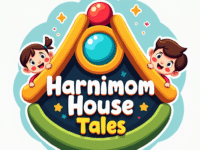
How to Help Toddlers Understand and Use Verbs (Action Words): An In‑Depth Guide
Verbs are not just action words—they are the power tools of early language development. Learning to grasp and use verbs unlocks toddlers’ ability to form rudimentary sentences and sets the stage for ongoing vocabulary and grammar growth. This evidence-based guide (properly cited throughout) equips parents and educators with everything needed: developmental insights, research-supported approaches, read-aloud tips, fun action-based games, and practical routines.
1 | Why Focus on Action Words?
Every sentence needs a verb
Nouns often come first in early speech, yet verbs are essential for forming even two-word sentences (“I eat,” “Mommy hug”) — and toddlers typically begin combining words around 2 years of age. Verbs like “go,” “eat,” “wash,” and “jump” are among the most frequent first-action words in children’s speech.
Better vocabulary = better grammar
A study highlighted by Hanen revealed that 2‑year‑olds who used a wider range of verbs demonstrated more advanced grammar just six months later, compared to toddlers with fewer verbs in their vocabs.
Vocabulary gap is real
Typically‑developing toddlers around 24 months possess 40–50 unique verbs in their vocabulary; in contrast, late‑talkers may have fewer than 3—significantly limiting their sentence building .
FREE PRINTABLES
2 | Toddler Verb Milestones
| Age Range | Verbal Milestone | Focus Verbs |
|---|---|---|
| 12–18 months | Mostly single words (nouns dominate) | eat, go, sleep |
| 18–24 months | 40–50+ verbs emerge; 2-word combinations | push, pull, kiss |
| 24–30 months | More grammar: -ing, plurals, simple Tenses | jump +s, calls, eats |
| 30–36 months | Short, declarative sentences | “I want cookie” |
To support toddlers, observe what they understand vs say. Active verbs can be taught with simple techniques to support each stage.
3 | Evidence-Based Strategies for Teaching Verbs
3.1 Use “Parallel Talk”
Narrate what your child is doing using simple declarative verbs:
“You are pouring water.” “Now you splash with your hands!”
Avoid asking too many questions such as “What are you doing?”—it can discourage spontaneous speech.
3.2 Choose Specific, Descriptive Verbs
Instead of vague verbs (“do,” “make”), model specific ones that match the action:
“You’re chopping vegetables.” “Cut the paper.” Learn the difference: “wash” not “do dishes”.
3.3 Use Rich, Contextual Sentences
New verbs are learned more effectively in rich syntax:
“Do you see the dog dancing in the street?” vs “dog dance.”
Toddlers learn faster when verbs appear in full context.
3.4 Encourage Physical Imitation (Modeling)
Toddlers learn best when they act out words. Video-based learning works better if paired with motion, but live imitation is most effective.
3.5 Diversify Verb Exposure
Research shows verb diversity—exposing toddlers to many different verbs—is a stronger predictor of later spontaneous use than repeating the same verb repeatedly.
3.6 Repeat, Reuse, and Generalize
Verbs like “pour,” “blow,” “wash” should be repeated throughout the day in multiple activities so toddlers connect the meaning with varied contexts.

4 | Practically Teaching Verbs: Read-Aloud Tips
These daily routines make a big difference:
- Choose reaction-rich books with clear actions (e.g. From Head to Toe, Press Here)
- Pause for participation: when you read “He stomps,” ask “Can you stomp too?”
- Recast student speech: If your child points and says “ball bounce,” reply:
“Yes, the ball bounces high!” - Describe wider picture: Instead of “The dog runs,” say “The dog runs and jumps over the log.”
- Extend beyond book time: If your child tries a new verb like twirl, echo it later: “You twirled in the living room!”
Benefits: these practices make passive reading an active verb lesson.
5 | Games & Activities That Boost Verb Learning
Learning verbs is way more fun through play:
| Game / Activity | How to Do It | What to Target |
|---|---|---|
| Simon Says | “Simon says jump,” “Simon says clap” (child imitating) | Action verbs + listening |
| Freeze Dance | Play music, pause and shout a verb—child must freeze acting | jump, tiptoe, spin, hop |
| Verb Charades | Act out a verb; others guess (“crawl,” “spin”, “clap”) | recognition + concept |
| Storytime + Movement | Read action-heavy book; act each verb | from veasy verbs to complex |
| Verb Treasure Hunt | Hide objects with cue cards saying “push,” “open,” “paint” | scanning, naming, doing |
| Picture Verb Book | Photograph your toddler doing actions; make a verb album | personalization + self-reflection |
These ideas are inspired by early‑childhood experts and are backed by practice for toddlers.
6 | Daily Routines for Verb Learning
Here’s a 5‑step framework you can use every day:
- Observe & Name
Watch routines (e.g. bath, playtime) and narrate using verbs:
“You pour the water. Now you splash.” - Pause & Invite
Ask your child: “Can you pour?” Then mimic the action together. - Rephrase with Rich Context
“You poured the water back into the cup.” Avoid one-word labeling. - Mix Verb Locations
Use the same verbs in different environments: “pour” at bath time, meal time, watering plants. - List to Track
Keep a simple chart: each week record new verbs your child uses vs understands. This lets you add new ones and revisit previously learned ones.
7 | When to Seek Extra Help
If by 24 months your child knows fewer than 10–15 verbs or barely uses any yet, consider consulting a speech‑language pathologist. Verb deficits can restrict sentence growth. Early intervention is most effective.
Experts like Hanen recommend a “verb‑rich home environment” if 2‑year‑olds have too few active verbs Hanen Centre.
8 | Summary Snapshot
- Why verbs matter: essential for building sentences and grammar.
- Typical milestones: Aim for 40–50+ verbs by 2 years.
- Evidence-based methods: Parallel talk, imitation, rich syntax, diversity.
- Actively use verbs: through books, games, movement, daily life.
- Track growth: monitor what your child understands and actively uses.
9 | Final Thoughts
Teaching verbs to toddlers is not just about words—it’s about movement, interaction, and meaning. With a mix of daily narrations, interactive reading, and play-based activities, toddlers quickly learn how verbs work—and how fun language can be. Start today one verb-filled play session at a time; within weeks, you’ll begin to hear pushed, jumped, washed, and played in your toddler’s natural speech.
Let me know if you’d like a printable activity pack or tailored reading list to go along with these techniques!













